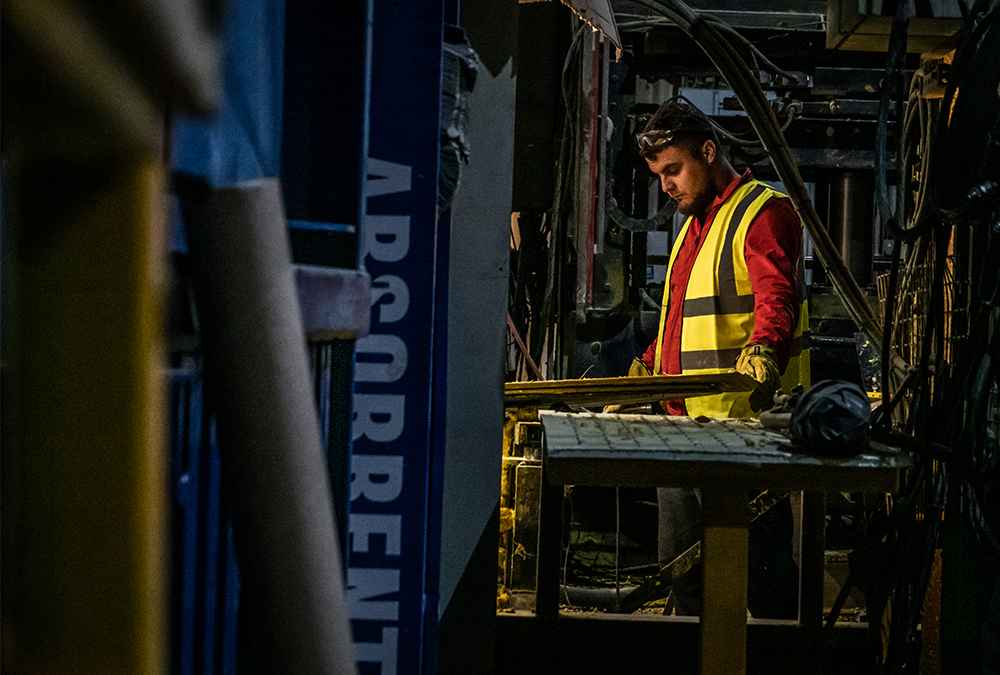Why is Carbon Forecasting important in the utilities industry?

Carbon Forecasting plays a key role in achieving environmental sustainability and complying with regulatory standards. In this guide, we’ll explain exactly what Carbon Forecasting is and the role it plays in the utilities industry.
What is Carbon Forecasting?
Carbon Forecasting is also known as carbon emission forecasting and carbon footprint forecasting and deals with the process of predicting future carbon and greenhouse gas emissions from industrial processes and other activities. Carbon Forecasting is carried out to gauge the impact of carbon emissions on the environment and is used by businesses to predict their carbon output.
How does Carbon Forecasting work?
To provide accurate Carbon Forecasting, your data collection must be accurate, and you must have adequate systems in place to properly analyze and project your future carbon emissions. A basic Carbon Forecasting strategy follows the following outline.
Step one – Data Collection
Data collection consists of gathering all of your company's historical data on carbon emissions. This can include energy consumption, i.e. your gas and electricity. It will also include the transportation of site materials and equipment and any industrial processes.
Step two – Choose your Carbon Forecasting model
There are a number of Carbon Forecasting models to choose from depending on whether you’re projecting long or short-term forecasts or a range of different scenarios. Some of the most common Carbon Forecasting models include;
- Linear Regression: Linear regression shows a linear relationship between carbon emissions and different variables, such as energy demand.
- Time Series Analysis: Time series analysis is particularly useful for forecasting in the utilities industry, as it can identify seasonal patterns in energy usage and patterns in emissions over time.
- Integrated Assessment Models (IAMs): IAMs are advanced models for the long-term implications of business changes and are suitable for long-term strategic planning that considers a wide range of different variables.
- Machine Learning: Recent advancements in technology including AI and the Internet of Things, can analyze large quantities of data and can be used to create highly accurate predictions based on user data.
Step three – Data Cleansing
Once the data has been collected and the model has been chosen. The data needs to be cleansed and any outliers removed. You may find that normalizing the data will help draw clear patterns in the data analysis.
Step four – Scenario Analysis
The next stage should be to develop different scenarios with different predicted outcomes based on varying assumptions. This could be the impact of consumers favoring renewable energy or the impact of sustainability-focused actions within the business.
Step five - Model Implementation
Apply the Carbon Forecasting model to the data in order to generate predictions for different scenarios.
Step six – Interpret Results
Analyze the results of the carbon forecast to advise your environmental and operational strategies in the future.
How can Carbon Forecasting help utility companies?
Carbon Forecasting can be useful for utility companies for several reasons. Such as helping them to adhere to environmental sanctions and regulations. Many utility companies have internal emission reduction goals that they must remain committed to, Carbon Forecasting can help keep businesses on track with achieving these targets.
Utility companies are increasingly held accountable by consumers, investors, and other stakeholders for their environmental performance. Transparent and accurate Carbon Forecasting demonstrates a commitment to sustainability and can enhance a company's reputation.
Looking for ways to cut carbon emissions with Oxford Plastics?
Here at Oxford Plastics, we’re committed to sustainability. Our products are designed with longevity in mind. Learn how we helped a major utility company in California reduce its carbon footprint and improve efficiency. Learn more about Oxford Plastics products today, or contact us to find out more.
Related News

What is closed-loop manufacturing?
What is closed-loop manufacturing? Closed-loop manufacturing is a process that reuses, recycles, and repurposes materials to...

Health and Safety Calendar 2024 US
For over three decades, we have prioritized safety in all our innovations. That’s why we’ve compiled a list of es...

2023 a success for Oxford Plastics
As we enter 2024, as a business we’d like to reflect on the year we’ve had and look to our future goals. We&rsquo...